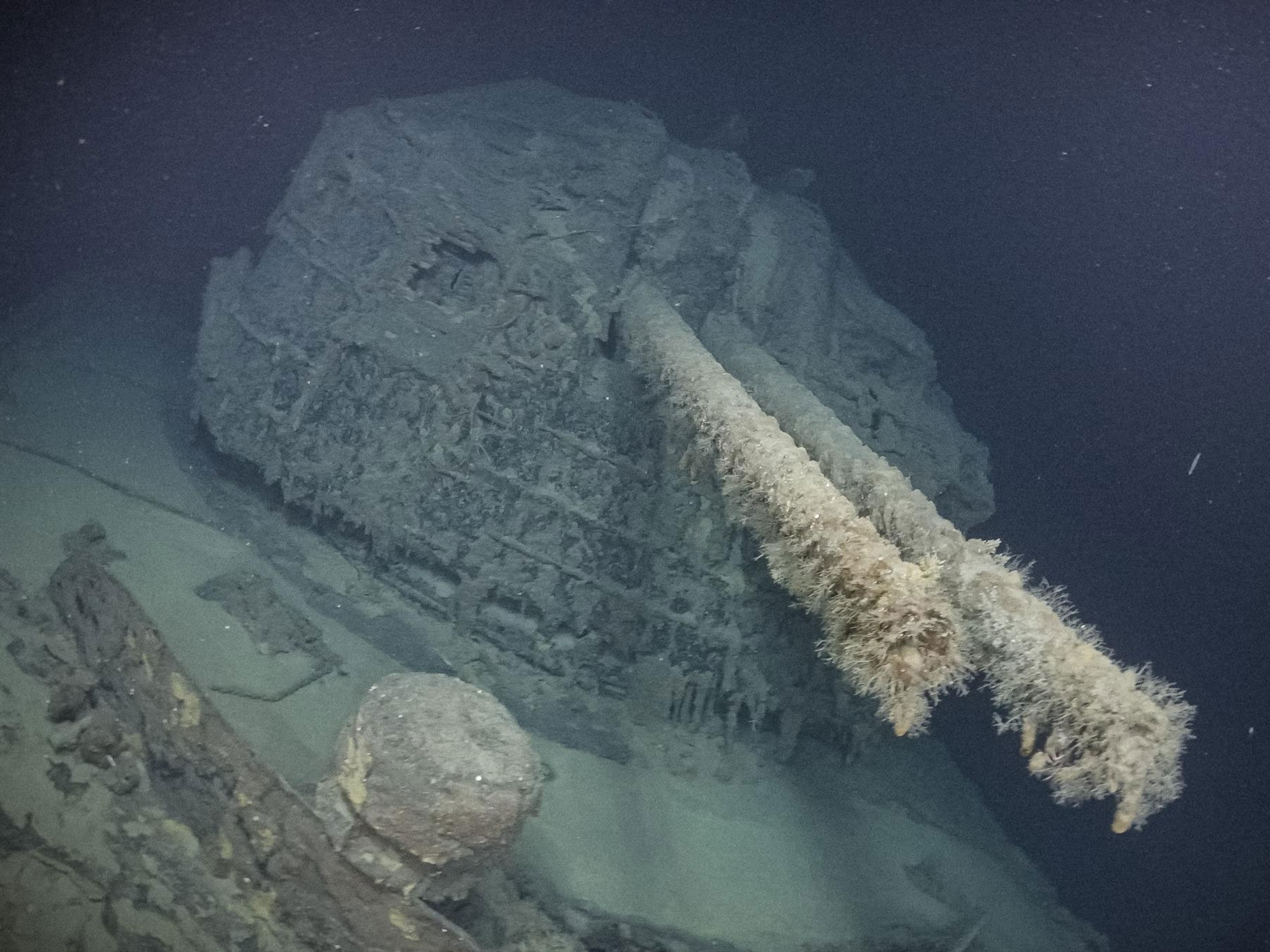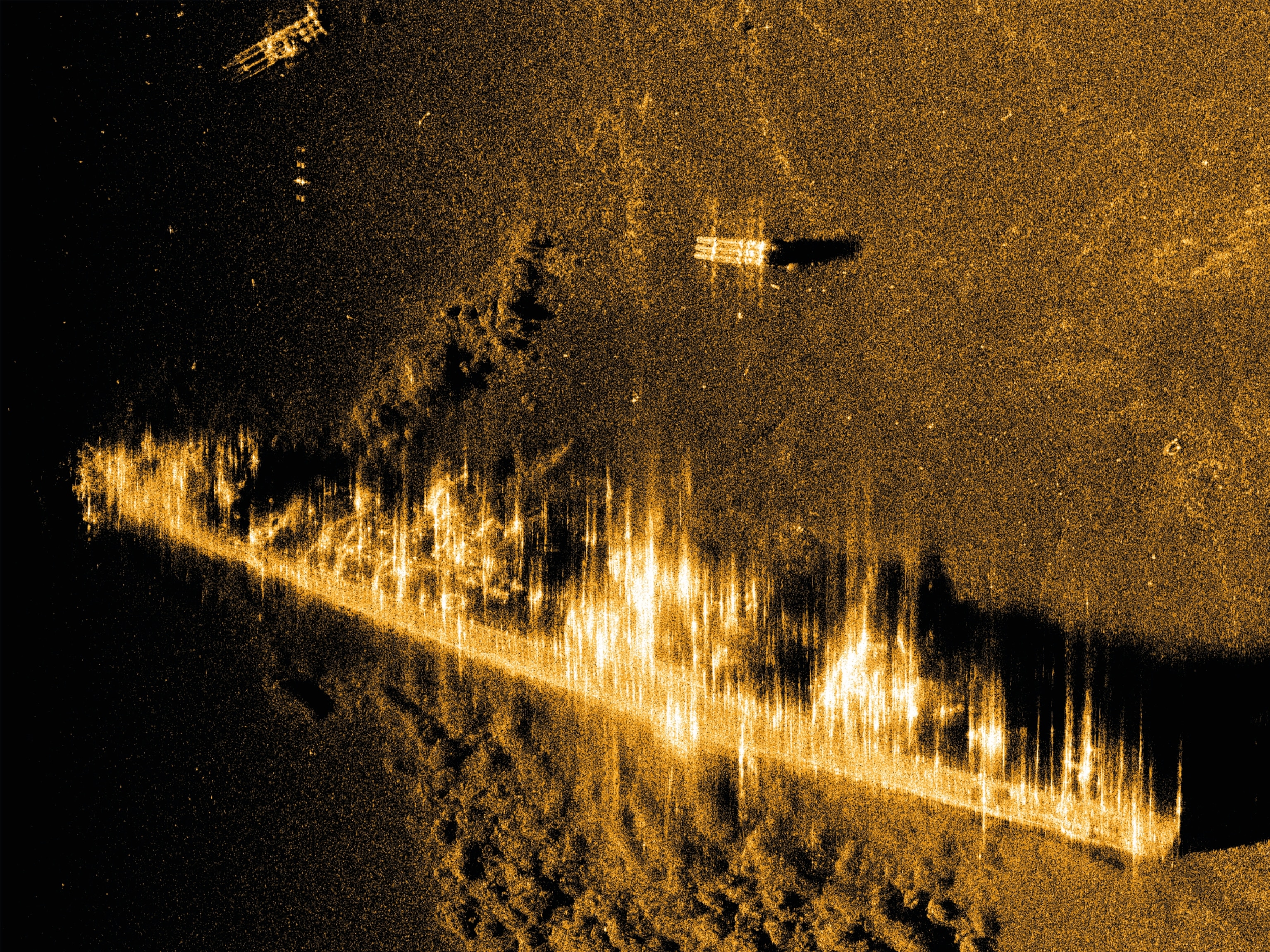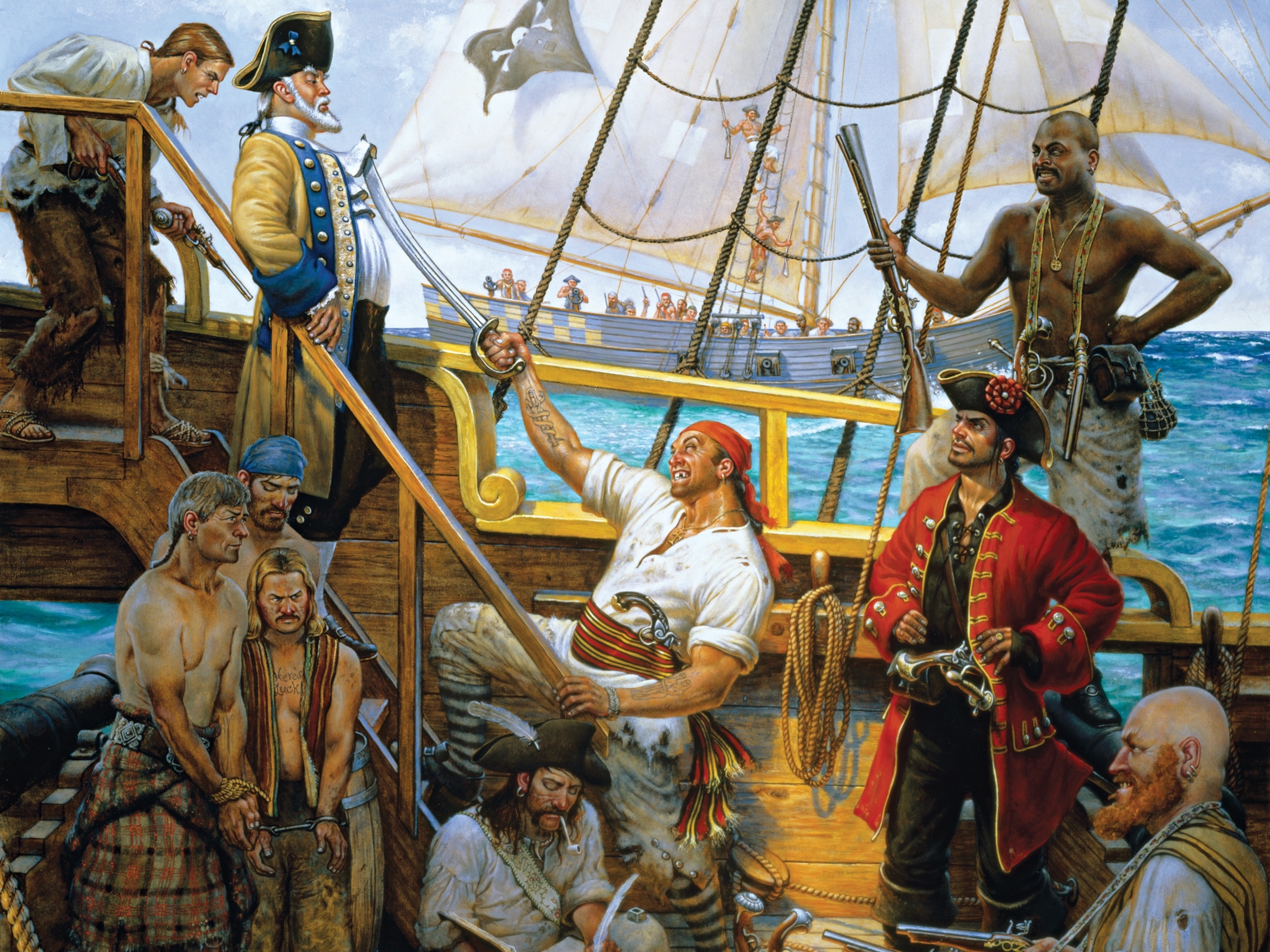See Wreckage of Vessel That Fired First American Shot in WWII
The infamous U.S.S. Ward fired at a Japanese submarine an hour before the attack on Pearl Harbor.
At 7:53 am on December 7, 1941, Japanese war planes attacked the American base at Pearl Harbor. Yet just an hour earlier, the U.S.S. Ward fired at a Japanese midget submarine just outside the harbor's entrance. It is considered the first shot fired by the U.S. in World War II.
The infamous destroyer, which was ultimately attacked by kamikazes and sunk in 1944, had been unseen for 73 years—until now.
New video shows what remains of the U.S.S. Ward where it lies at the bottom of Leyte Gulf in the Philippines. While the location of the destroyer has been known since its sinking, it's the first time the wreck of the vessel has been seen. Underwater footage taken by the R/V Petrel, an exploration ship owned by Microsoft cofounder Paul Allen, shows the visible remains of the 250-foot ship now overgrown with vegetation.
Capturing these images of the Ward was no easy task. The remains sit more than three miles below the surface, and a combination of sonar scanning, underwater cameras, and remotely operated vehicles reached the historic ship.
It's the latest underwater wreckage found by Allen's research team. In August, they located the U.S.S. Indianapolis, and in 2015, they found the remains of the world's largest battleship, the Musashi.




